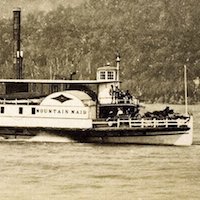 |
STEAMBOAT LAUNCH
On the Greatest Day That Georgeville Ever Saw
The Subscribers respectfully announce to the public, that the steamboat now in course of construction at Georgeville, will be launched into the waters of Lake Memphremagog on Thursday, the 27th. Ladies and Gentlemen are invited to be present and witness this novel (in this part of the country) ceremony. |
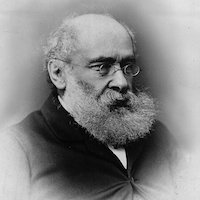 |
THE TROLLOPES CLIMB OWL'S HEAD
The first recorded account of a climb of Owl’s Head was by none other than prolific Victorian novelist Anthony Trollope.
While on a reporting trip for a non-fiction book about North America Governer General Sir Edmund Walker Head advised him that he should on no account leave Lower Canada until he had “seen the lake and the mountains of Memphra-Magog.”
|
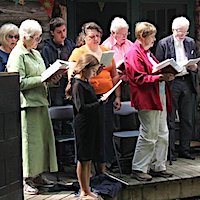 |
A STAR TURN FOR A STORIED ORGAN
In August 1878 Boston Rev. Samuel June Barrows and his wife Isabel first pitched their tents in the Georgeville area. Over the years, their family introduced hundreds of friends and colleagues to the lake.
Many, like the Barrows themselves, were leading figures in the progressive reform movements of the late 19th and early 20th centuries, whether the cause was women's suffrage, child labour, temperance, prison reform or health care.
|
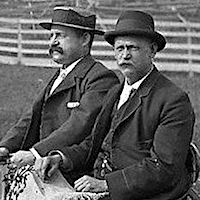 |
GEORGEVILLE'S MEDICINE MAN
As Georgeville's longest-serving resident doctor, Keyes was not only a revered physician and surgeon. He was also a dentist and pharmacist and manufacturer of patent medicines, a Justice of the Peace and postmaster, a grain merchant, grocer, and stationer, and the proprietor of one of Georgeville's largest and most popular summer boarding houses. And, yes -- there's no avoiding it – in an era of strict liquor regulation, he was, in the eyes of some, the village bootlegger. |
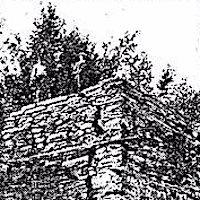 |
THE LOST VILLAGE OF MAGOON POINT
Magoon's Point was a unique and distinct community that once existed down on the Point over a hundred years ago, one of many small communities that characterized the nineteenth century landscape. It did not have any artisans to speak of or religious institutions, but it did have a post office, a small store, a one–room schoolhouse, a two–story boarding house, various private residences and a cemetery. |
|
|


